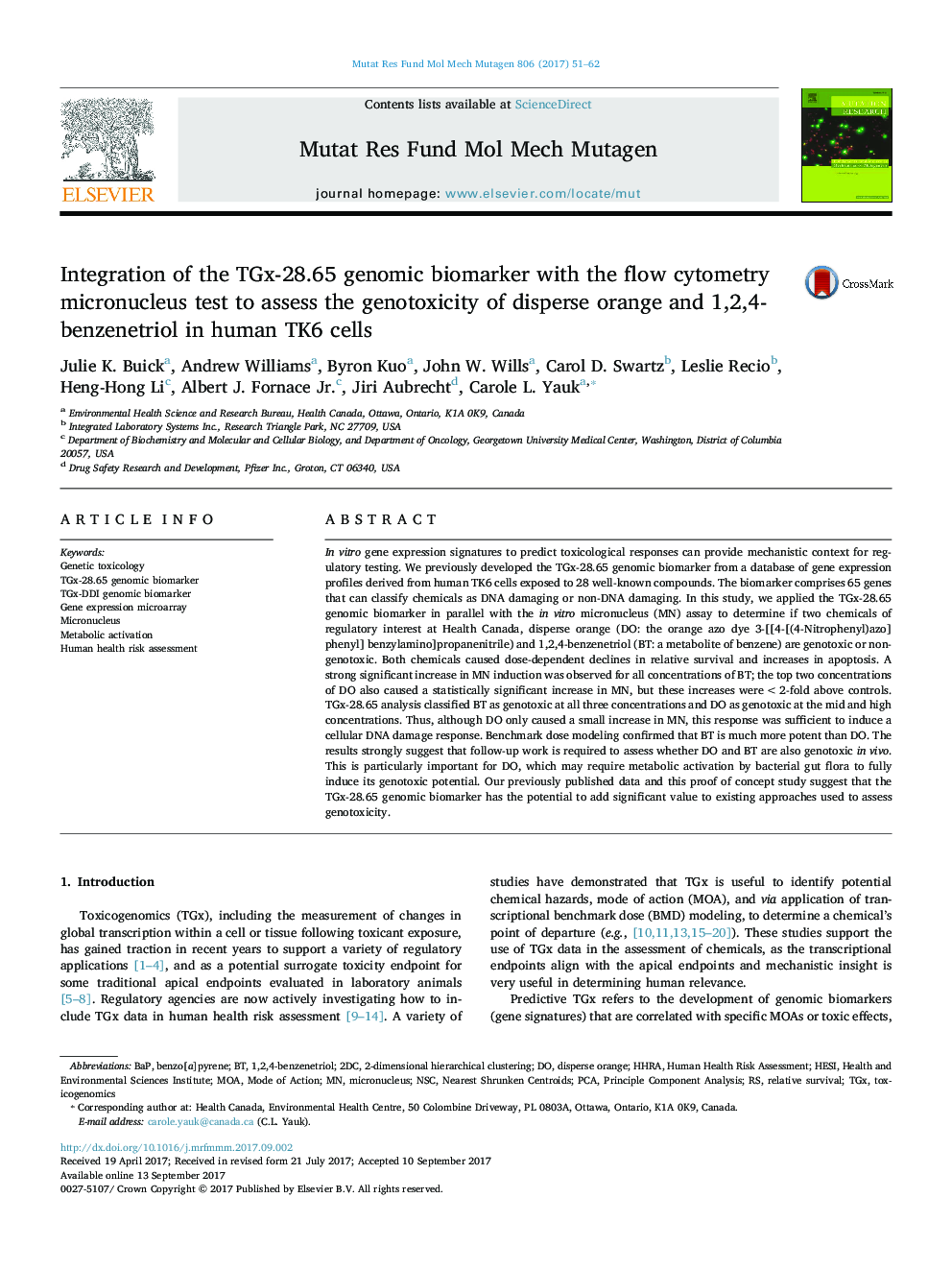| کد مقاله | کد نشریه | سال انتشار | مقاله انگلیسی | نسخه تمام متن |
|---|---|---|---|---|
| 5528653 | 1548302 | 2017 | 12 صفحه PDF | دانلود رایگان |

- TGx-28.65 genomic biomarker can classify chemicals based on ability to damage DNA.
- TGx-28.65 analysis classified DO as genotoxic with weak induction of MN.
- TGx-28.65 analysis classified BT as genotoxic with strong induction of MN.
- Follow-up work is required to assess in vivo genotoxicity of DO and BT.
- Genomic biomarker is useful for regulatory genotoxicity testing of data-poor chemicals.
In vitro gene expression signatures to predict toxicological responses can provide mechanistic context for regulatory testing. We previously developed the TGx-28.65 genomic biomarker from a database of gene expression profiles derived from human TK6 cells exposed to 28 well-known compounds. The biomarker comprises 65 genes that can classify chemicals as DNA damaging or non-DNA damaging. In this study, we applied the TGx-28.65 genomic biomarker in parallel with the in vitro micronucleus (MN) assay to determine if two chemicals of regulatory interest at Health Canada, disperse orange (DO: the orange azo dye 3-[[4-[(4-Nitrophenyl)azo]phenyl] benzylamino]propanenitrile) and 1,2,4-benzenetriol (BT: a metabolite of benzene) are genotoxic or non-genotoxic. Both chemicals caused dose-dependent declines in relative survival and increases in apoptosis. A strong significant increase in MN induction was observed for all concentrations of BT; the top two concentrations of DO also caused a statistically significant increase in MN, but these increases were <2-fold above controls. TGx-28.65 analysis classified BT as genotoxic at all three concentrations and DO as genotoxic at the mid and high concentrations. Thus, although DO only caused a small increase in MN, this response was sufficient to induce a cellular DNA damage response. Benchmark dose modeling confirmed that BT is much more potent than DO. The results strongly suggest that follow-up work is required to assess whether DO and BT are also genotoxic in vivo. This is particularly important for DO, which may require metabolic activation by bacterial gut flora to fully induce its genotoxic potential. Our previously published data and this proof of concept study suggest that the TGx-28.65 genomic biomarker has the potential to add significant value to existing approaches used to assess genotoxicity.
Journal: Mutation Research/Fundamental and Molecular Mechanisms of Mutagenesis - Volume 806, December 2017, Pages 51-62